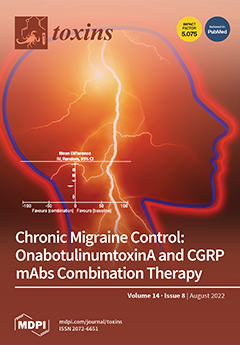The utilization of the invasive weed,
Parthenium hysterophorus L. for producing value-added products is novel research for sustaining our environment. Therefore, the current study aims to document the phytotoxic compounds contained in the leaf of parthenium and to examine the phytotoxic effects of all those phytochemicals on the seed sprouting and growth of Crabgrass
Digitaria sanguinalis (L.) Scop. and Goosegrass
Eleusine indica (L.) Gaertn. The phytotoxic substances of the methanol extract of the
P. hysterophorus leaf were analyzed by LC-ESI-QTOF-MS=MS. From the LC-MS study, many compounds, such as terpenoids, flavonoids, amino acids, pseudo guaianolides, and carbohydrate and phenolic acids, were identified. Among them, seven potential phytotoxic compounds (i.e., caffeic acid, vanillic acid, ferulic acid, chlorogenic acid, quinic acid, anisic acid, and parthenin) were documented, those are responsible for plant growth inhibition. The concentration needed to reach 50% growth inhibition in respect to germination (EC
g50), root length (EC
r50), and shoot length (EC
s50) was estimated and the severity of phytotoxicity of the biochemicals was determined by the pooled values (rank value) of three inhibition parameters. The highest growth inhibition was demarcated by caffeic acid, which was confirmed and indicated by cluster analysis and principal component analysis (PCA). In the case of
D. sanguinalis, the germination was reduced by 60.02%, root length was reduced by 76.49%, and shoot length was reduced by 71.14% when the chemical was applied at 800 μM concentration, but in the case of
E. indica, 100% reduction of seed germination, root length, and shoot length reduction occurred at the same concentration. The lowest rank value was observed from caffeic acids in both
E. indica (rank value 684.7) and
D. sanguinalis (909.5) caused by parthenin. It means that caffeic acid showed the highest phytotoxicity. As a result, there is a significant chance that the parthenium weed will be used to create bioherbicides in the future.
Full article






